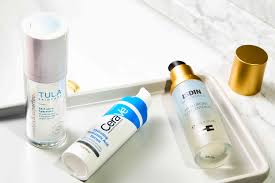
Can You Mix Niacinamide, Vitamin C, and Hyaluronic Acid?
Layering skincare products can be a bit of a puzzle, especially when combining potent ingredients like niacinamide, vitamin C, and hyaluronic acid.
These three heavy-hitters are known for their impressive skin benefits, but there’s often confusion about whether they can be used together.
The good news? You can use all three in your routine—but how you layer them matters.
From beginners to skincare enthusiasts, understanding how to mix these ingredients correctly will help you get the best results.
Let’s break it down, step by step, and explore how to combine these ingredients to achieve glowing, hydrated, and youthful-looking skin.
Can I Use Niacinamide with Hyaluronic Acid and Vitamin C?
The short answer is yes! Niacinamide, hyaluronic acid, and vitamin C are all highly beneficial for your skin, and they can be used together effectively.
However, there’s often confusion about mixing niacinamide and vitamin C due to an older myth.
Historically, some believed that using niacinamide and vitamin C together would cause the ingredients to cancel each other out.
This was due to early formulations of ascorbic acid (vitamin C) that weren’t as stable and could cause irritation.
Thankfully, modern formulations have improved significantly, and now stable forms of vitamin C and niacinamide can be safely used together.
To get the best results, it’s still recommended to alternate the time of day you use them.
For instance, using vitamin C in the morning and niacinamide in the evening ensures that each ingredient works effectively without causing irritation.
But what about the third ingredient—hyaluronic acid? Let’s take a look at how these work together.
Can I Use Niacinamide and Hyaluronic Acid Together?
Absolutely! Niacinamide and hyaluronic acid are a perfect pair. These two ingredients complement each other beautifully to hydrate and balance the skin. Here’s how they work together:
Niacinamide: This is a form of vitamin B3 that is known for its anti-inflammatory and soothing properties. It helps with skin texture, minimizes the appearance of pores, and regulates sebum (oil) production.
Hyaluronic Acid: A powerful humectant, hyaluronic acid draws moisture into the skin and helps retain it, keeping the skin hydrated and plumped.
Since both ingredients are water-based, they work together to provide your skin with deep hydration while maintaining balance.
The ideal way to layer them is by applying hyaluronic acid first, followed by niacinamide.
This way, you give your skin the moisture boost it needs, and niacinamide can go to work regulating oil production and calming the skin.
This combination is suitable for all skin types, and it helps maintain healthy moisture levels in the skin. No more dry patches or imbalanced skin!
Can I Use Vitamin C and Hyaluronic Acid Together?
Yes, you can use vitamin C and hyaluronic acid together, and they make an excellent duo for achieving glowing, healthy skin. Here’s why:
Vitamin C: As a potent antioxidant, vitamin C protects the skin from free radical damage, brightens the complexion, and reduces hyperpigmentation. It helps repair sun damage and evens out skin tone.
Hyaluronic Acid: On the other hand, hyaluronic acid is the hydration powerhouse. It keeps your skin hydrated by pulling moisture from the environment and locking it into the skin.
The best way to apply them is to start with hyaluronic acid after cleansing, followed by vitamin C.
Why? Hyaluronic acid will first hydrate your skin and ensure that the skin barrier is ready to absorb the vitamin C.
It also helps your skin act like a sponge, so the vitamin C will penetrate deeper and work more effectively.
This combination not only keeps your skin hydrated but also combats signs of aging, dullness, and pigmentation issues. Together, they’ll give you that radiant, smooth complexion you’ve been searching for.
If you want a deeper dive into how to layer vitamin C and hyaluronic acid, check out our blog post on the topic for more expert tips and tricks.
Does Vitamin C React with Niacinamide?
There’s still some confusion about whether niacinamide and vitamin C can be used together. This myth originates from older skincare formulations, which often contained unstable forms of ascorbic acid (vitamin C).
When these ingredients were mixed, they would sometimes neutralize each other, preventing both from working as effectively.
However, modern formulations of vitamin C have stabilized the ingredient, and niacinamide is now much more compatible with vitamin C.
The pH of newer formulations is balanced, which prevents irritation and allows both ingredients to work harmoniously.
While the myth still circulates, rest assured that you can safely use niacinamide and vitamin C together in your routine, as long as you’re using the right products.
If you’re still unsure, it’s always a good idea to consult with a dermatologist to ensure these ingredients are suitable for your skin.
Can I Use Hyaluronic Acid Every Day?
Yes, hyaluronic acid can be used every day, and in fact, it’s a great idea to use it twice daily in your morning and evening routines.
Hyaluronic acid works by drawing moisture into the skin, and it performs this function throughout the day, keeping your skin hydrated and plump.
One of the best ways to apply it is to use it on slightly damp skin.
When the skin is still a bit moist, hyaluronic acid can lock in that moisture, making your skin feel more hydrated and smooth.
Plus, it helps protect your skin from free radical damage caused by environmental stressors like pollution and UV rays.
Which Goes First—Vitamin C or Hyaluronic Acid?
When layering vitamin C and hyaluronic acid, you should apply them in order of consistency, starting with the thinnest to the thickest product.
Generally, vitamin C serums have a thinner, more liquid consistency compared to hyaluronic acid, which is often a thicker gel-like formula.
Here’s the basic rule to follow for applying these two:
Cleanse your face.
Apply hyaluronic acid first, as it’s the thinnest and will help hydrate your skin.
Follow with vitamin C, which will then be absorbed into the skin to protect it from oxidative damage and brighten the complexion.
Finish with a moisturizer and sunscreen (if it’s daytime) to lock in hydration and protect your skin.
By following this order, you ensure that your skin gets the full benefit of both products while keeping your complexion looking fresh and healthy.
Final Thoughts: Can I Mix Niacinamide, Vitamin C, and Hyaluronic Acid?
In short, the answer is yes—you can absolutely mix niacinamide, vitamin C, and hyaluronic acid for a powerful skincare routine that tackles multiple skin concerns, including hydration, aging, and pigmentation.
Here’s a quick breakdown on how to use them:
Niacinamide + Hyaluronic Acid: Apply niacinamide after hyaluronic acid for hydration and oil regulation.
Vitamin C + Hyaluronic Acid: Start with hyaluronic acid to hydrate, then apply vitamin C for antioxidant protection and brightening.
Niacinamide + Vitamin C: Use them at different times of day (vitamin C in the morning, niacinamide at night) for maximum benefit.
By layering these three ingredients correctly, you’ll give your skin the best chance to thrive—whether you’re tackling dryness, dullness, acne, or signs of aging.
If you have any questions about mixing these ingredients or need personalized skincare advice, feel free to reach out to us on Instagram. We’re here to help you achieve your healthiest, most radiant skin yet!


